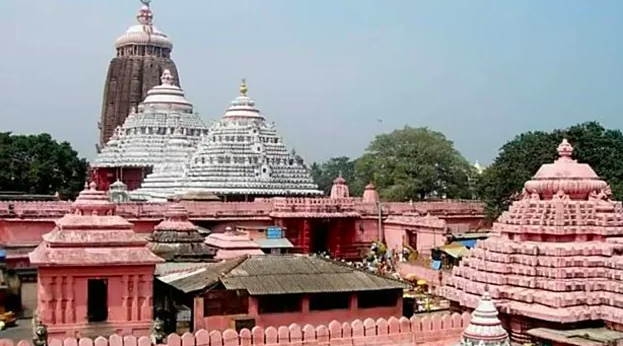The ‘Ratna Bhandar’ – ‘Treasure Trove’ – of the Shri Jagannath Temple located in Puri, Odisha, was opened on 14th July after over forty years, which is of great importance in the annals of the temple. The glitters of Ratna Bhandar were opened after a strategic opening and after following the SOPs provided by the Odisha government strictly. This move was preceded by proper listing of the items kept here, such as jewelry and other valuable items.
The reopening was therefore expected based on the religious importance of the temple and the treasures it holds. The Office of the Chief Minister of Odisha extended respect in a fervor – “Jai Jagannath Oh Lord! You are rhythmic. The whole world is oppressed by your desire.” The feelings conveyed by such an official statement point to the religious and traditional significance of the temple and its worshipful idols.
Even the process of reopening of the Ratna Bhandar was methodical. SJTA Chief, Arabinda Padhee explained all the processes involved telling that the entire process is very secretive and very precise. It seems that the procedure entailed the access to the outer Ratna Bhandar first and then there were certain directions regarding the inner sanctum as well. In the same respect, it was recorded and any act that was performed followed strict adherence to set protocols, as observed in the videotaping done on the process.
The Chairman of the Inspection Committee, Justice Biswanath Rath, accepted the prospect concerning the state of Ratna Bhandar, along with other things that would be contained within it when it would open again, last in 1985. Nevertheless, the rules concerning the time for opening the ceremony remained more or less ambiguous, and, after consultations with the representatives of the temple and scholars in the field of religion, the committee chose the exact time for the opening ceremony, namely, 1:28pm.
Narajito, Odisha’s Law Minister Prithviraj Harichandan said that after the opening, the authorities copied the records of the store’s inventory comprehensively. This involved participation of people from Reserve Bank of India in order to supervise the process of tallying of ornaments as well as the process of proper grouping of the same. It was to maintain photorealistic descriptions of all the catalogs and products featured along with their weight and quality of each product and photographs in order to make the process of documentation of all the collections of temple.
The Administration of the Archaeological Survey of India which is responsible for the conservation of the above said temple also carried out the repairing works at the premises of the Ratna Bhandar also. That such a position is doubled points to the fact that ASI has an acute interest in the historical and cultural last of the 12th-century shrine.
To add more, here it will be seen that Ratna Bhandar was not opened merely for inauguration but it was part of a strategic planning as part of the protection and documentation of the valuable assets detailed in the temple. For prince, it symbolised the combined concept of belief, people’s culture and efficient working of the administration. The reason for performing the action of opening the treasury vault after such time was on account of the necessities of appropriately taking care and preserving those sacred abodes precious to devotees and scholars.
Therefore, finally, the reopening of Ratna Bhandar at the Shri Jagannath Temple in Puri becomes significant with regard to particularly religious activities and engagements as well as certain sacred duties concerning the past as well as the future of the structure / monument. It was the engaging combination of both spirituality and bureaucracy where it established how ‘the’ temple is relevant in the myth and geographical structure of Odisha and how it is still touching the million hearts across the world.











Add Comment